Which kind of electric vehicle is best for you?
View Available Models
Explore available models and find the All-Electric or Plug-in Hybrid Electric Vehicle model that fits your lifestyle.
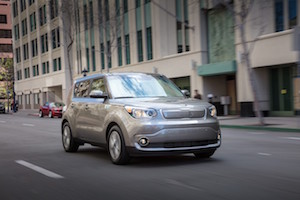
Lower Fuel Cost & Charge Time
See how much you'll save when you switch from a gas or diesel vehicle to an electric vehicle - and find out how long it'll take to charge it!
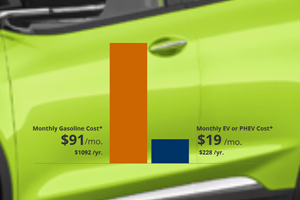
Interactive EV and EV Charger Tour
Visually discover EV benefits and see how the chargers work. And don’t just take our word for it, you can listen to EV testimonials from those who have already made the switch.
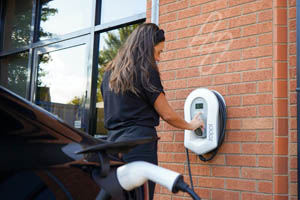
Do you have the ability to charge your vehicle at home?
Yes, I can charge at home.
If you have a garage, carport or driveway with access to electricity, you can probably charge at home. There are two primary home charging options.
- Level 1 120V charging (standard household outlet)
- Level 2 240V charging (requires installation and/or 240V outlet)
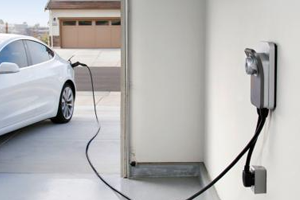
No, I can't charge at home.
Public charging is likely available, but keep in mind it takes time and prices vary substantially. Charging time varies based on car battery size and charger power.
- Level 2 240V charging: 4 to 8 hours
- Level 3 480V+ charging: 20 to 30 minutes (Not available for PHEVs)
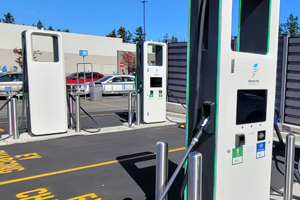
How much can you save with an EV?
Learn when to charge your EV
Learn about peak power and how charging your EV at specific times can be beneficial to to cooperative and the environment.

EV incentives
You may be eligible for various incentives for the purchase of an electric vehicle, charging equipment and rate programs.
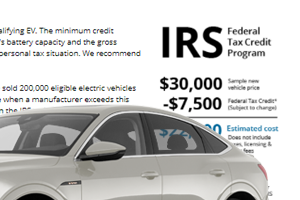
There are various electric vehicle (EV) types available; these are the three most common types:

Battery Electric Vehicles have a battery and an electric motor instead of a gas tank and an internal combustion engine. Sometimes EV are also referred to as "All Electric Vehicles" or "Plug-in Vehicles" (not to be confused with Plug-in Hybrid Electric Vehicles). They run entirely on electricity and do not produce any exhaust from the burning of fuel. It is important to note that a portion of the electricity supplied to your home may be generated from fossil fuels such as coal and natural gas.

Plug-in Hybrid Electric Vehicles have an electric motor AND a gas-powered internal combustion engine. Some PHEVs operate exclusively, or almost exclusively, on electricity until the battery is nearly depleted, then the gasoline-powered engine turns on to provide power. Like Battery Electric Vehicles, PHEV can be plugged in to charge the battery when the vehicle is not in use.

Hybrid Electric Vehicles have an electric motor AND a gas-powered internal combustion engine and don't plug-in for charging. HEV can have substantial range on a single tank of gas, but they still burn fossil fuel, produce carbon emissions, require trips to the gas station and scheduled engine maintenance. HEV may be an ideal choice for those with extended commutes and limited charging system access.

Vehicle Range
Range refers to the number of miles an EV will travel before the battery needs to be recharged. Electric cars typically have a shorter maximum range on a charge than fossil fueled cars can travel on a full tank of gasoline, however, EV can be charged at home - no gas station required - and the overall operation cost is typically substantially less than a gasoline-powered vehicle. It's worth noting that 78% of all commuters in America drive less than 40 miles per day1, thus if they are driving an EV, they can go multiple days without recharging. Many 2017 EV have a range well over 100 miles per charge, with some models reaching over 300 miles per charge.

Vehicle Charging Options
Charging your EV requires plugging into a charger connected to the electric grid, also called electric vehicle supply equipment (EVSE). There are three major categories of chargers, based on the amount of power the charger can provide:
AC Level 1
Provides charging through a 120 V AC plug and does not require installation of additional charging equipment. Level 1 can typically deliver 2 to 5 miles of range per hour of charging. Level 1 is most often used in home applications, but is sometimes used at workplaces. A full charge may take up to 24 hours with level 1 120 V charging.
AC Level 2
Provides charging through a 240 V plug and requires the installation of additional charging equipment by a licensed electrician/installer. Level 2 chargers typically deliver 10 to 60 miles of range per hour of charging. Level 2 is used in homes, workplaces, and for some public charging.
DC Fast-Charge
Provides charging through 480 V AC input and requires specialized, high-powered charging equipment and special equipment in the vehicle itself. DC Fast-Charging can deliver an 80% battery charge or 60 to 100 miles of range for most EV models in about 20-30 minutes of charging. This is the format used most often in public charging stations, especially along heavy traffic corridors. Plug-in hybrid electric vehicles typically do not have fast charging capabilities.
Depending on how far you drive each day, you may be able to meet your driving needs with basic level 1 charging at home. To reduce charging time, you may want to install a 240 V level 2 charging system. This may also provide you with additional functionality (like cost estimation or remote on/off) and allow you to participate in future utility programs designed to reward people for charging at specific times, like after midnight, when area power demand is low. Studies have demonstrated that level 2 charging systems provide slight energy efficiency benefits over level 1 chargers – savings estimates vary based on length of charge time.

EV Battery Information
Electric vehicle batteries are typically designed to last for the expected life of the vehicle, but battery life should be considered when calculating the extended cost of ownership, as all batteries eventually wear out and must be replaced eventually. Battery replacement is typically costly – but keep in mind, gas powered vehicle equipment, such as motors and transmissions, has a lifespan too. The rate at which batteries expire depends on the type of battery and how they are used — many types of batteries are damaged by depleting them beyond a certain level. Some batteries degrade faster when stored at higher temperatures, when they are rapidly charged, and when they are fully charged. Review manufacturer information carefully when selecting an EV model.The failure rate of some electric vehicles batteries already on the road is as low as 0.003%2. There are also high mileage warranties on electric vehicle batteries available with many manufacturers. Several manufactures offer multi-year and one hundred thousand mile+ warranties on the batteries in their vehicles.

Emissions & Efficiency
Emissions Reduction: EVs produce no tailpipe emissions. While charging the battery may increase pollution at the power plant that is generating the electricity from fuel sources such as coal and natural gas, total emissions associated with driving EVs are still typically less than those for gasoline cars—particularly if the electricity is generated from renewable energy sources like wind, solar or hydroelectric. Even when the power is generated using fossil fuels, electric vehicles usually show significant reductions in overall global carbon emissions over gasoline vehicles due to the highly carbon-intensive process of mining, pumping, refining and transporting fossil fuels.Electric cars are not completely environmentally friendly as there can be significant issues to consider related to energy and material use in the manufacturing process. This may include energy-intensive manufacturing processes or the mining and refinement of chemicals and materials.
Energy Efficiency: Internal combustion engines are relatively inefficient at converting fuel energy to propulsion as most of the energy is wasted as heat. Electric motors are more efficient in converting stored energy into propulsion, and electric drive vehicles do not consume energy while at rest or coasting. Additionally, regenerative braking can be used to re-capture energy during braking. Typically, conventional gasoline engines effectively use only 15% of the fuel energy content to move the vehicle or to power accessories, while electric drive vehicles have on-board efficiency of around 80%.3

Reduced Operating Cost
The average U.S. household spends nearly one-fifth of its total family expenditures on transportation, thus saving on fuel can make a big difference in the average family's budget4. Electricity is less expensive than gasoline and EVs are more efficient than gasoline vehicles. Electricity prices are also generally much more stable than gasoline prices. On a national average, it costs less than half as much to travel the same distance in an EV than a conventional vehicle, but your savings could be far more substantial if your current gas-powered vehicle gets poor mileage.
Reduced Maintenance Requirements
All-Electric Vehicles (BEV) require less maintenance than conventional vehicles because there are fewer fluids (like oil and transmission fluid) to change and far fewer moving parts. EV require minimal scheduled maintenance to their electrical systems, which can include the battery, electrical motor, and associated electronics. Because of regenerative braking, brake systems on EVs typically last longer than on conventional vehicles.No Oil Changes: BEV do not require engine oil, thus there are no oil changes (normally required every 3,000 to 7,000 miles, requirements vary by automobile manufacturer)
No Spark Plugs and Wires: BEV do not require spark plugs and wires, thus no replacement (estimated replacement at 100,000 miles on gas engine)
No Exhaust System: BEV do not have mufflers or catalytic converters, two component of your exhaust system that can fail and result in expensive replacements.
No Emissions Testing: BEV do not burn fossil fuels and do not have a tailpipe, thus they do not emit byproducts that need to be tested. States typically grant EVs an emissions exemption.
Sources
1 U.S. Department of Transportation, Bureau of Transportation Statistics, the Omnibus Household Survey
2 U.S. Department of Energy – Energy Efficiency and Renewable Energy Alternative Fuels Data Center, Maintenance and Safety of Hybrid and Plug-In Electric Vehicles
3 Shah, Saurin D. (2009), Plug-In Electric Vehicles: What Role for Washington? (1st edition). The Brookings Institution. pp. 29, 37 and 43.
4 U.S. Department of Energy – Office of Energy Efficiency and Renewable Energy, Saving on Fuel and Vehicle Costs
Disclaimer
This FAQ is provided by ChooseEV. Some numbers and statistics in this content may be estimates and subject to interpretation. Many factors must be taken into account to determine the total cost of ownership of EV and traditional gas-powered vehicles. This information is provided to give consumers a general understanding of EV concepts and opportunities. Customers should review information from EV manufacturers before making a purchase decision.

